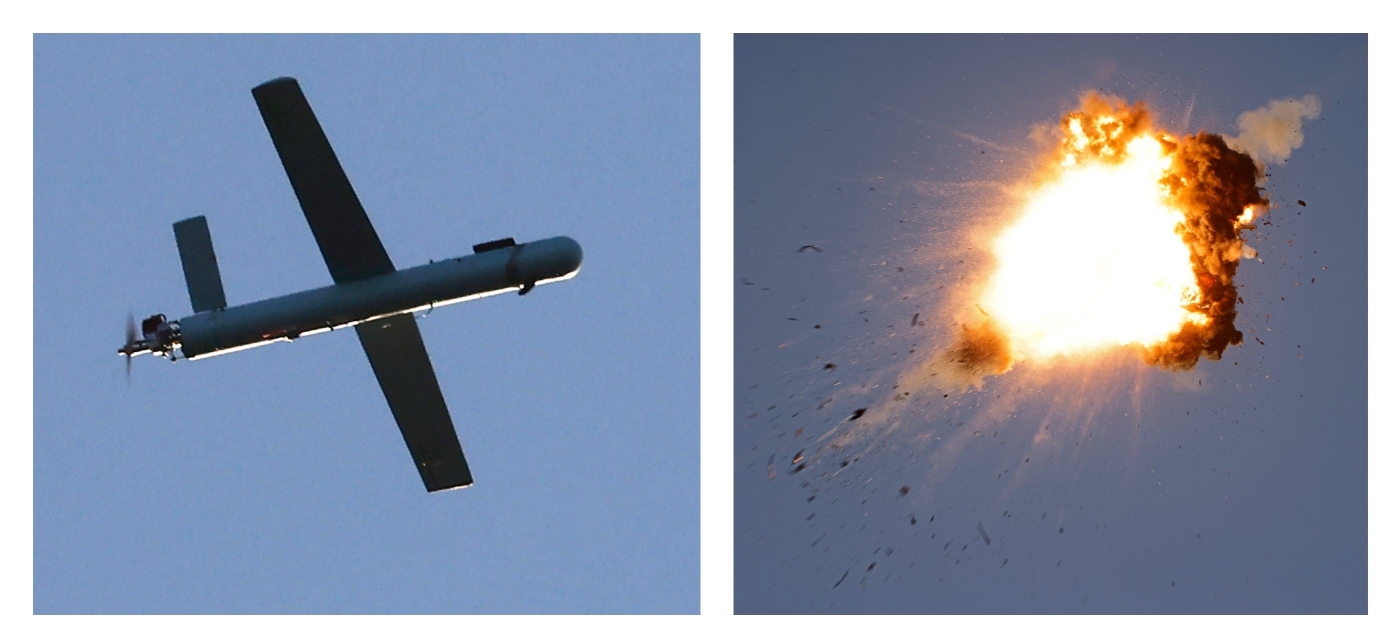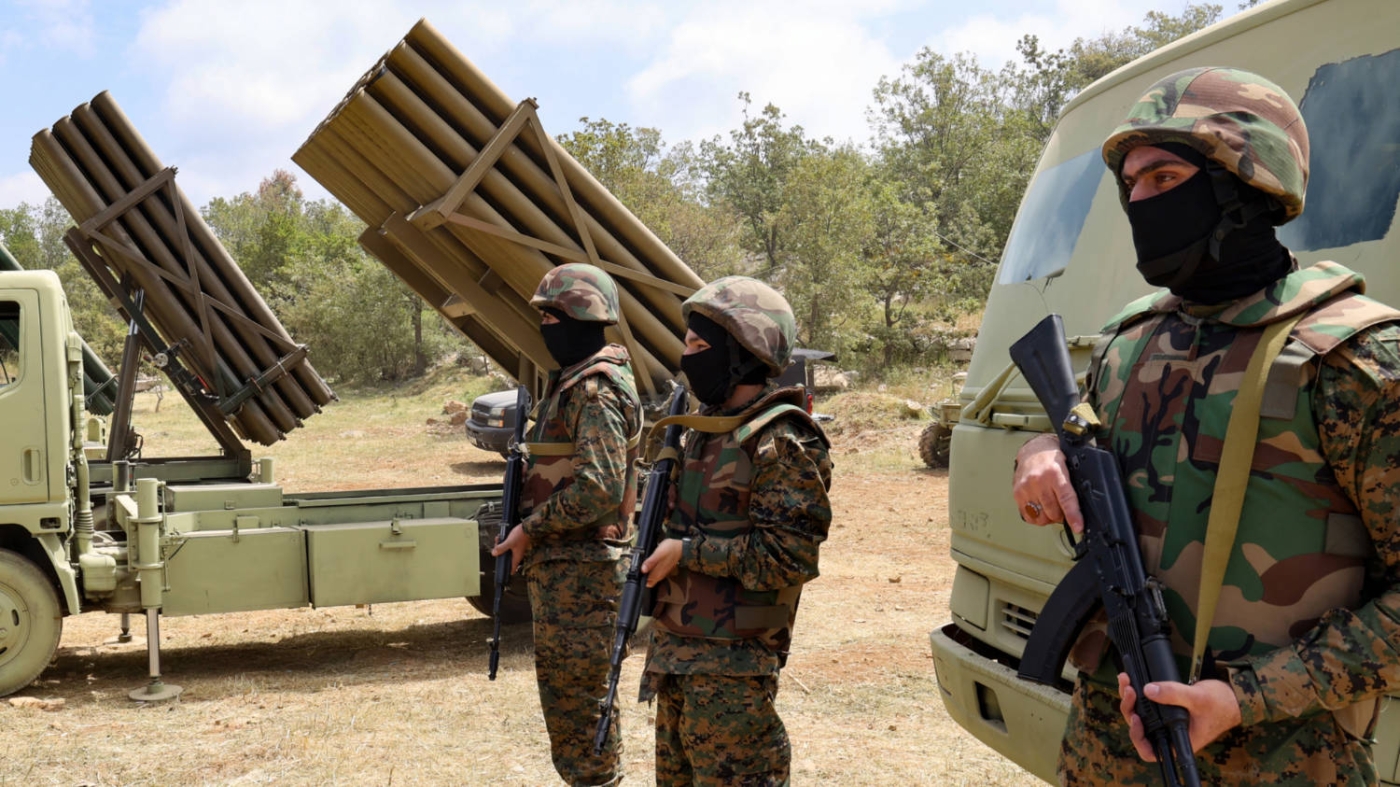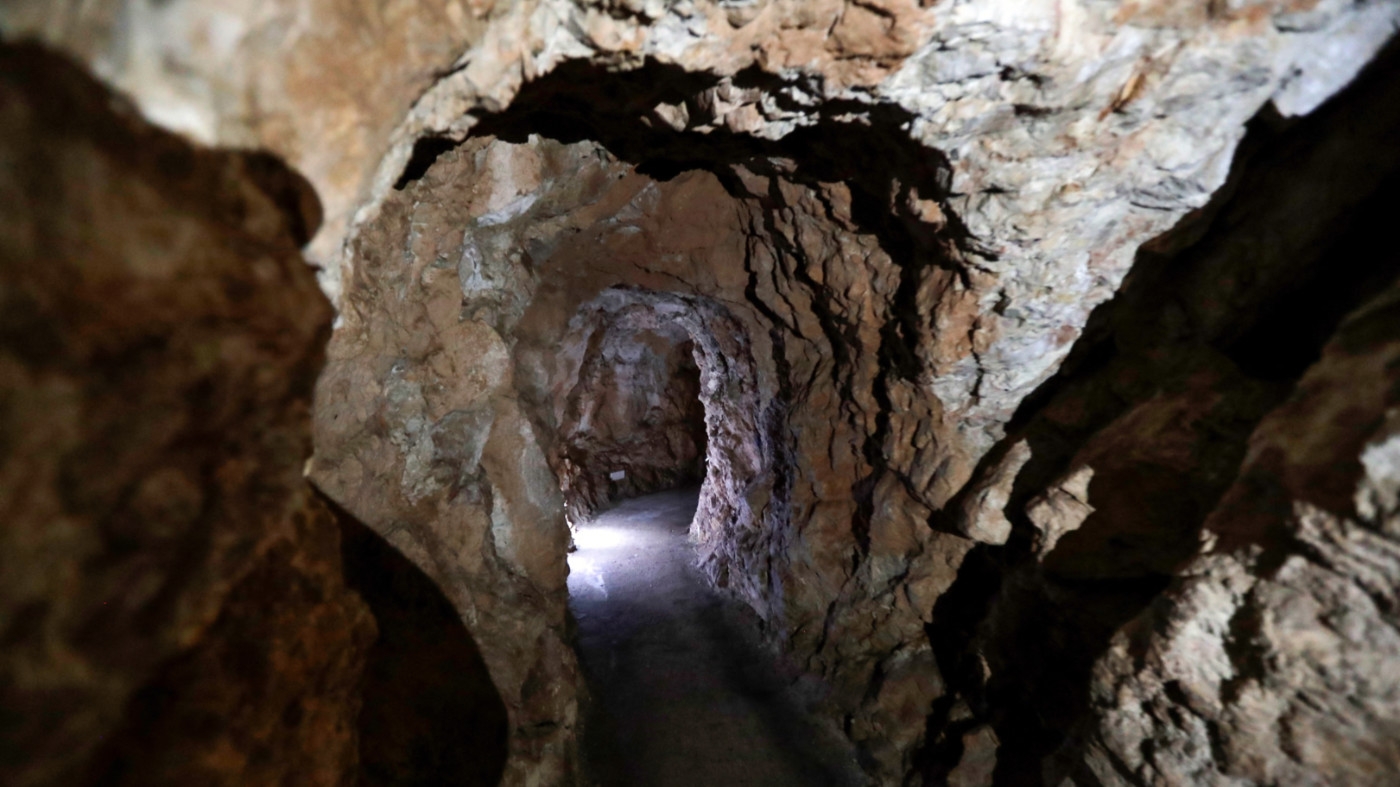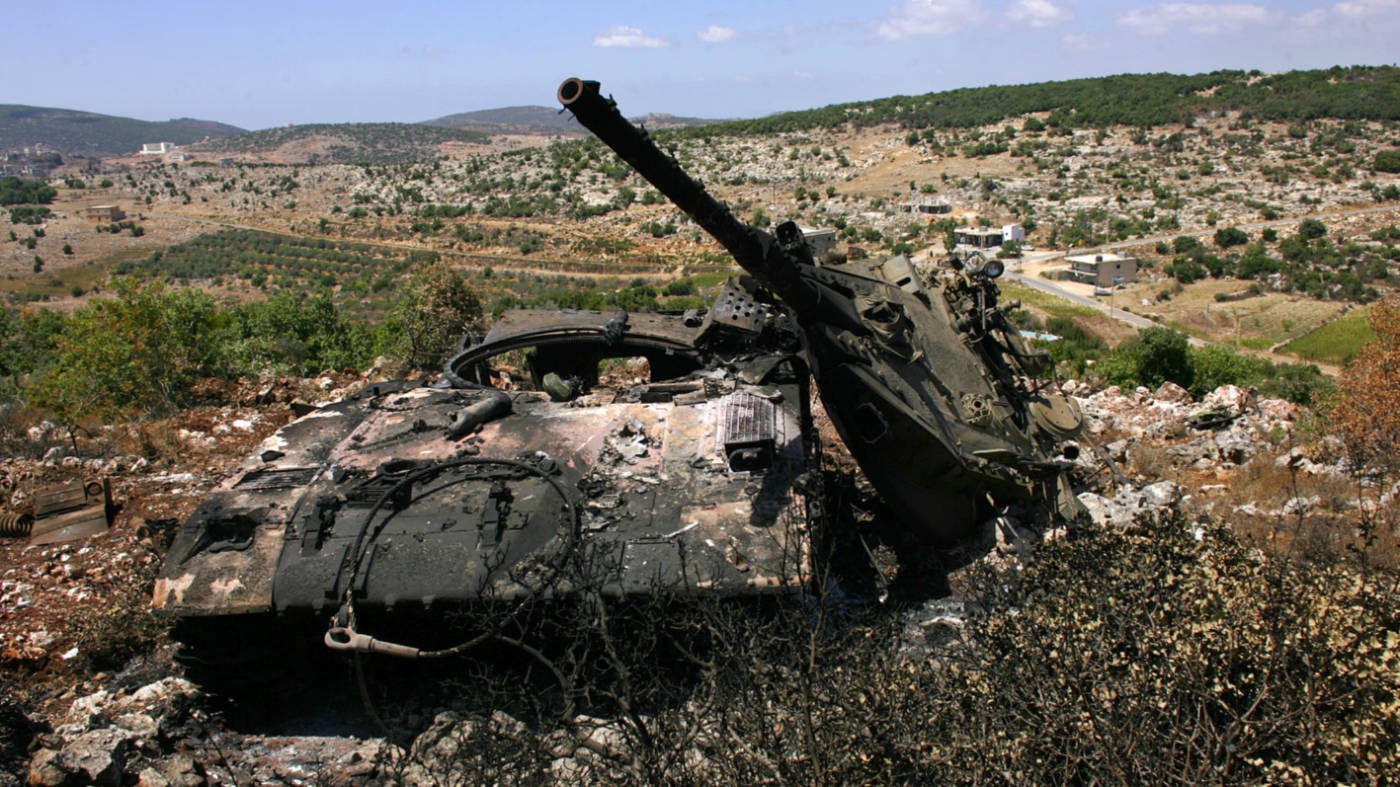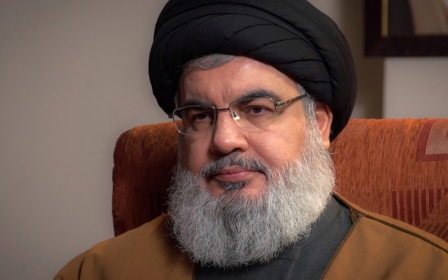Israel's war on Lebanon: What arms does Hezbollah have?

Hezbollah, regarded as the most strongly armed non-state group in the world, has come under increased attack from Israel during the past week.
The group had already been engaged in tit-for-tat hostilities along Lebanon's southern border since the 7 October Hamas-led attack on southern Israel and Israel's war on Gaza.
The recent uptick in fighting began with a coordinated two-day Israeli attack on 17 and 18 September in Lebanon, which involved the detonation of thousands of pagers and walkie-talkies belonging to Hezbollah. At least 38 people were killed and more than 3,000 were wounded.
That was followed on 20 September by an air strike on a densely populated area in Beirut, which killed at least 45 people, including two top Hezbollah commanders, as well as several women and children. This week, wide Israeli bombing of southern and eastern Lebanon has killed at least 560 people and forced tens of thousands more to flee their homes.
On Wednesday, Hezbollah, which has already been firing rockets into northern Israel for months, for the first time directed a ballistic missile toward Tel Aviv, Israel's most populous city.
New MEE newsletter: Jerusalem Dispatch
Sign up to get the latest insights and analysis on Israel-Palestine, alongside Turkey Unpacked and other MEE newsletters
The Lebanese movement, born out of Israel’s occupation of south Lebanon between 1982 and 2000, has acquired and developed a diverse and sophisticated arsenal. Middle East Eye takes a look at its capabilities.
Drones
Hezbollah's drones are used for attacking Israeli targets as well as surveillance.
Since November, Hezbollah has used explosive-laden drones. Early that month, a drone attack on an Israeli army post in the occupied Golan Heights wounded two Israeli troops.
It has also used drones and short-range missiles in an attempt to overwhelm Israel’s US-supplied Iron Dome air defence system while using other longer-range projectiles that can reach deeper into Israeli territory.
Drones have also been used for surveillance. In June, Hezbollah flew a commercial drone over Haifa for several hours, recording footage and later posting some of it online.
The nine-minute video, published by Al Mayadeen TV and Al Manar, pinpointed several locations, including military sites and civilian infrastructure.
Rockets
Hezbollah is estimated to have 130,000 rockets and missiles, which it has steadily stockpiled since its last conflict with Israel in 2006.
Its arsenal includes the Falaq-2 rocket, used for the first time on 8 June, which has a range of 10km and carries larger warheads than the previously used Falaq-1.
Several of Hezbollah’s rockets, including the Fajr, Khaibar, Raad and Zilzal, have medium ranges of 40-200km and powerful payloads, carrying between 50 and 600kg of explosive warheads.
In the past, Hezbollah leader Hassan Nasrallah has indicated that the group can retrofit some of these weapons, converting them from unguided rockets to precision missiles.
Last week, in response to the pager and walkie-talkie attacks, Hezbollah said it hit Israel's Ramat David Air Force base with Fadi 1 and Fadi 2 rockets, a long-range weapon which is not known to have been used in the year-long conflict previously. The rockets have a range of between 80 and 105 km.
On Tuesday, the movement announced that it used Fadi 3 in an attack on Israel's Samson base in the Lower Galilee region. Fadi 3 is another rocket not previously known to have been used.
Long-range missiles
Hezbollah reportedly has the Iranian Fateh-110 and the Scud, with ranges of 250-300km and 300-550km respectively.
Andreas Krieg, professor at the Defence Studies Department of King's College London, told MEE that "a considerable amount of short and mid-range missiles have been destroyed" by Israeli attacks on Lebanon in the past week.
“But the crown jewels of its missile capability are not stored overground but underground. These larger missiles with bigger warheads and longer range will only be used if Hezbollah is confronted with an all-out war scenario,” he said.
“The damage in Israel will be so considerable that there is no stepping back from the abyss anymore.”
On Wednesday, Hezbollah said it fired a ballistic missile targeting the Mossad intelligence agency headquarters near Tel Aviv. Israel said it was intercepted and that there were no casualties. It was the first time a missile launched from Lebanon had reached central Israel.
In April, Iran fired around 170 drones, 30 cruise missiles and 120 ballistic missiles towards Israel, in the first such direct Iranian attack on Israeli soil. The majority were intercepted by Israel, the US, UK, France and Jordan.
Although Hezbollah’s ballistic missile on Wednesday was stopped, a salvo of drones and longer-range missiles from Hezbollah would likely be more difficult to intercept than Iran’s attack.
“Hezbollah's combined missile capability is the greatest physical threat to Israel,” said Krieg. “Because of its proximity to Israel, it makes interception more tricky as there is less warning time, particularly for longer range missiles that take a different trajectory than the smaller missiles Hezbollah has fired in the last 12 months.”
Air defences
Where Israel is likely to inflict the most damage on Hezbollah is through air attacks.
The Lebanese movement has a number of defensive weapons designed to destroy Israeli armoury, including anti-aircraft, anti-tank and anti-ship missiles.
Surface-to-air munitions, such as the Iranian-made 358 anti-aircraft missiles, have been used several times since October to shoot down Israeli drones.
But they offer minimal protection during large-scale Israeli attacks like we have seen over the past week and are nowhere near as effective as Israel’s air defences, which include the Iron Dome, Arrow and David’s Sling systems.
Mustafa Asaad, a Lebanese military analyst, told MEE: “Against the aerial campaign, Hezbollah cannot counter the vast superiority fielded by Israel.
"The two or three types of air defence available and seen in use in south Lebanon are only capable against drones or low flying helicopters.”
Asaad added, however, that Hezbollah’s anti-shipping missiles have stronger capabilities. The Yakhont anti-ship cruise missile, which has a 300km range and can carry 200kg of explosives, could threaten shipping or fend off Israeli attempts at blockading Lebanon via sea.
Ground forces and defence
Hezbollah is unable to station manned aircraft or armoured vehicles in Lebanon due to Israel’s superiority in the air.
However, it reportedly owns T-55 and T-72 tanks, as well as other armour, which is held in Syria and has been used by the group during its operations in support of the Syrian government.
There is no clear indication yet if Israel plans to launch a ground invasion into Lebanon. When asked on Monday, Israeli military spokesperson Daniel Hagari said: “We will do whatever is needed”.
A Lebanese security source told MEE that if such an invasion is launched, the Lebanese army would join with Hezbollah in confronting it.
Krieg said that Hezbollah’s centre of gravity is the physical defences and infrastructure it has built into the rock of southern and eastern Lebanon, which may span hundreds of kilometres.
“The tunnel systems are dug deep inside the rock by engineers from Iran and North Korea. These are impenetrable fortresses from which Hezbollah will operate, should Israel decide to invade.”
Number of fighters
Hezbollah was estimated in 2022 to have 20,000 active fighters and 20,000 reservists.
In the event of a ground war, Hezbollah troops are more battle-hardened than during the last confrontation in 2006. In particular, they have become seasoned in urban warfare from fighting alongside President Bashar al-Assad’s forces during Syria’s decade-long civil war.
Krieg said the group had lost some experienced fighters in Syria’s civil war. “Also, in recent weeks, a lot of mid and high-ranking commanders have been assassinated by Israel, which will have an impact on the ability of Hezbollah to fight back, should Israeli infantry invade,” he said.
But, he added: “Hezbollah's network structure makes it immensely resilient”.
“This combined with an intricate and impenetrable tunnel infrastructure in the south of Lebanon make the Hezbollah threat one that Israel cannot destroy militarily.”
Israeli troops, too, are battle-hardened having launched a ground invasion in Gaza almost 11 months ago. But Krieg does not think it has necessarily improved Israeli land capabilities.
“The Israeli military has not shown great sophistication trying to deal with urban warfare in Gaza,” he said. “[It] has been a military eroded by decades of occupation and policing. It has little experience with high-intensity war fighting.”
While Israel has a steady stream of arms and hardware, its manpower has been exhausted by a year of war in Gaza.
Asaad noted that Israel was unlikely to launch a blanket ground invasion akin to what it did in 1978 or 1982. “They know that it would be impossible to achieve any tactical victory and would only have them dragged into a slow kill zone."
Middle East Eye delivers independent and unrivalled coverage and analysis of the Middle East, North Africa and beyond. To learn more about republishing this content and the associated fees, please fill out this form. More about MEE can be found here.


